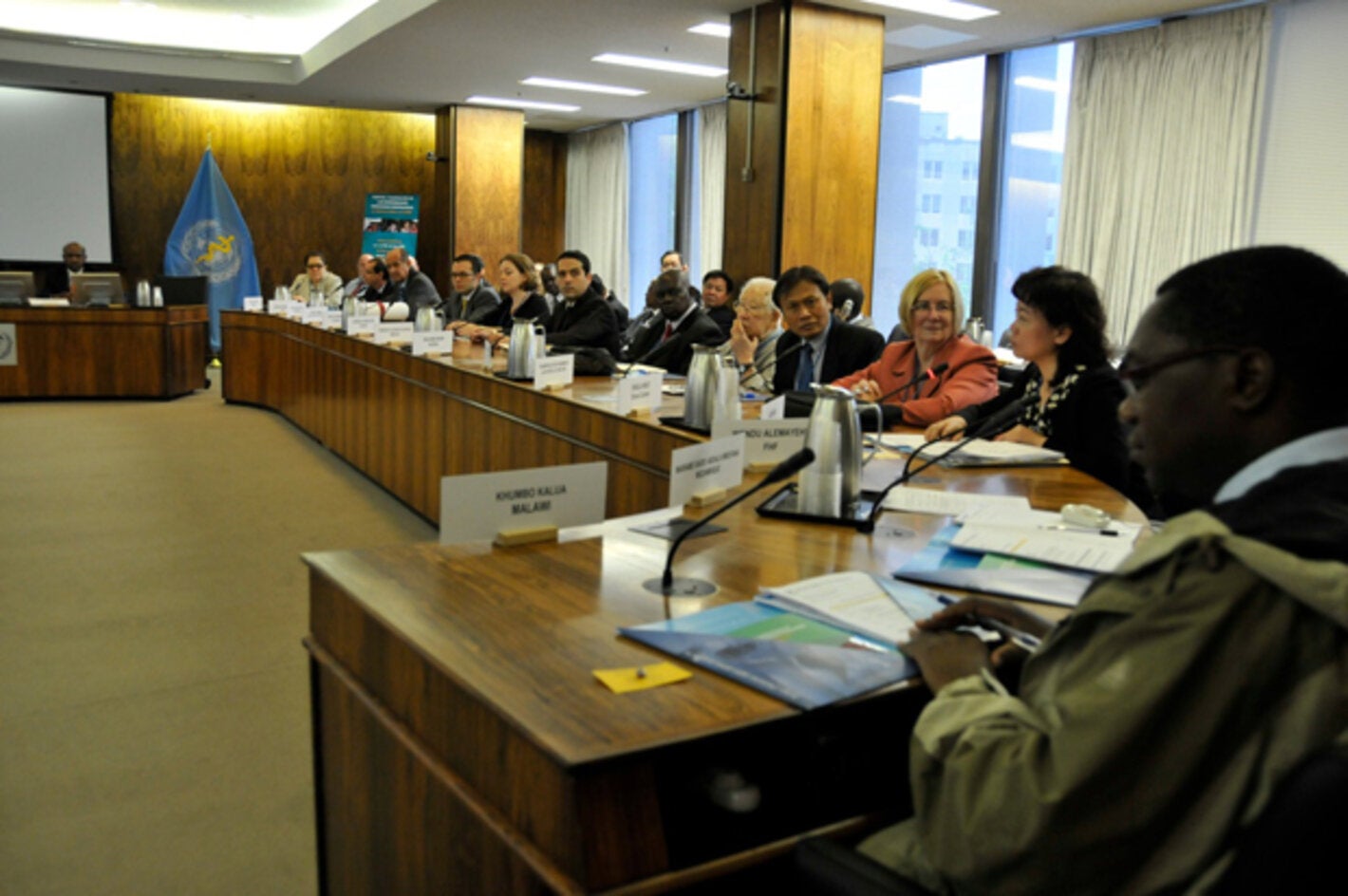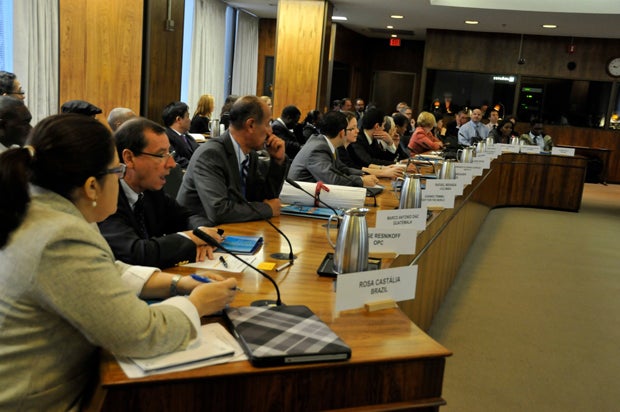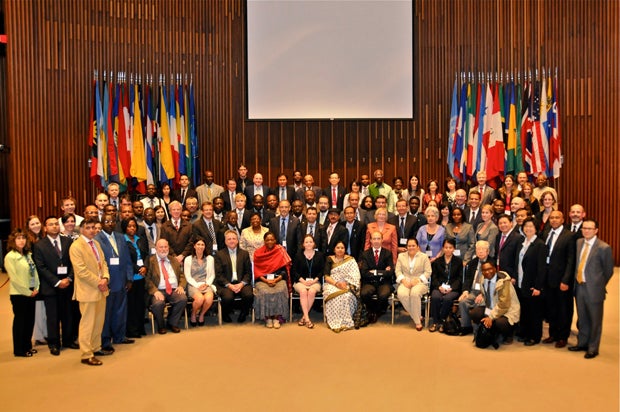
Washington, D.C., 11 May 2012 (PAHO/WHO) — More than 2.2 million people in 53 countries around the world suffer visual impairment, and 1.2 million are permanently blind as a result of trachoma, an infectious disease that primarily affects people living in poor rural areas.
A group of experts working to eliminate the disease by 2020 will meet on May 14—16 at the Pan American Health Organization/World Health Organization (PAHO/WHO) in Washington, D.C., to evaluate recent progress toward trachoma elimination and to determine next steps to achieve this goal. It is the 16th annual meeting of the WHO Alliance for Global Elimination of Blinding Trachoma by 2020 (GET 2020) and the first time the meeting has taken place in the Americas
Trachoma is part of a group of "neglected tropical diseases" and is the leading infectious cause of blindness in the world. It affects mainly low-income populations in rural areas with limited access to water and sanitation services.
The disease is caused by the bacterium Chlamydia trachomatis, which is spread from person to person through direct contact via hands or clothing, or by flies that land on the face of someone who is infected. If not treated with antibiotics (azithromycin), long-term infection can result in permanent blindness. The disease is treatable with antibiotics and surgery for inflammatory sequelae and is preventable through sanitary, educational, and environmental measures.
The GET 2020 Alliance will review implementation of a global prevention and control strategy and the specific situation of each affected country around the world. Participants will share experiences with the application of the elimination strategy and ways of improving coordination between partners.
In the Americas, trachoma is present in Brazil, Guatemala and Mexico, and—since 2010—in Colombia. An estimated 50 million people in Latin America and the Caribbean live in risk areas. All four affected countries in the region have active elimination programs.
Globally, the highest priority region for elimination efforts is Africa, where 21 of 46 countries are or have been endemic for trachoma, accounting for 71 percent of all people living in endemic areas. In Southeast Asia, three of 11 countries are endemic; in the Eastern Mediterranean, 10 of 22 countries; and in the Western Pacific, eight of 27 countries are endemic.
The elimination strategy promoted by the GET 2020 Alliance, known as "SAFE," advocates the following:
- Surgery for people in the late stage of the disease that leads to blindness if left untreated;
- Antibiotic treatment to reduce infection within families in affected communities;
- Facial cleanliness to reduce the risk of spreading the disease;
- Environmental improvement through better management of animal and human waste, sanitary living conditions, and expanded access to water and sanitation.
Situation in the Americas
Health officials from the Americas made trachoma elimination a priority and set the goal of eliminating cases of blindness caused by the disease by 2015 at the 49th PAHO Directing Council in 2009. In May 2011, the first regional meeting of trachoma program managers in the Americas was held to analyze progress toward elimination and to develop lines of action in the region's four affected countries. It was followed by a second meeting in Guatemala in April 2012.
Currently:
- Brazil, which is home to the vast majority of the region's at-risk population, has a Trachoma Control Program that includes active case-finding and targeted control interventions. The country has completed national prevalence mapping and has developed a national elimination plan.
- Guatemala has completed a trachoma prevalence study and is implementing interventions to advance toward elimination.
- Mexico is close to eliminating trachoma as a public health problem through the efforts of its Program for Prevention and Control of Trachoma in the State of Chiapas, where the disease affects indigenous communities.
- Colombia, with support from Brazil, is studying the characteristics of the disease in indigenous communities in the Amazon region near the border with Brazil.
Launched under WHO's leadership in 1997, the GET 2020 Alliance works to eliminate trachoma as a public health problem through resource mobilization and partnerships between countries, nongovernmental organizations, and the private sector.
About Trachoma
Trachoma is caused by the bacterium Chlamydia trachomatis. Principal risk factors are related to water shortages, flies, and living conditions characterized by poor hygiene and crowding. In endemic areas, active disease is common in children.
Infection often begins during infancy or childhood and can become chronic. If left untreated, the infection eventually causes the eyelid to turn inwards, which in turn causes the eyelashes to rub on the eyeball, resulting in intense pain and scarring of the front of the eye. This ultimately leads to irreversible blindness, typically between 30 and 40 years of age.
PAHO, which celebrates its 110th anniversary this year, is the oldest public health organization in the world. It works with its member countries to improve the health and the quality of life of the people of the Americas. It also serves as the Regional Office for the Americas of WHO.





